- Back to Home »
- Syria and threat of sectarian war
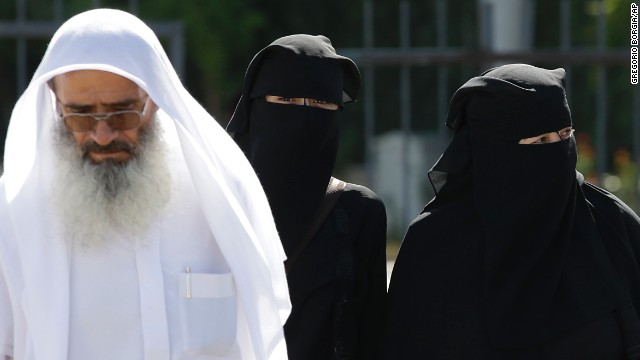 Syrian refugees arrive at the Turkish border gate of Cilvegozu on Thursday, September 5. The U.N. refugee agency said the number of Syrians who have fled their war-ravaged country has risen to more than 2 million.
Syrian refugees arrive at the Turkish border gate of Cilvegozu on Thursday, September 5. The U.N. refugee agency said the number of Syrians who have fled their war-ravaged country has risen to more than 2 million. 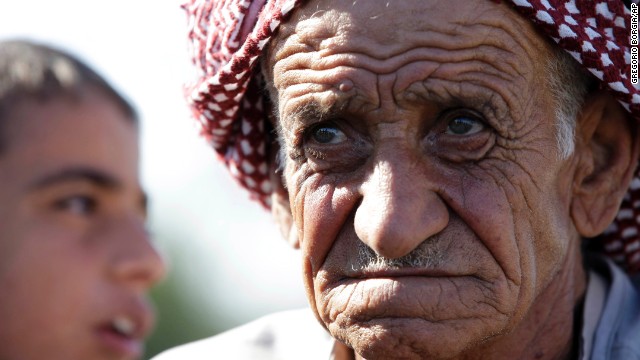 Syrian refugees gather in the village of Salkin after crossing the Syrian-Turkish border on September 5.
Syrian refugees gather in the village of Salkin after crossing the Syrian-Turkish border on September 5. 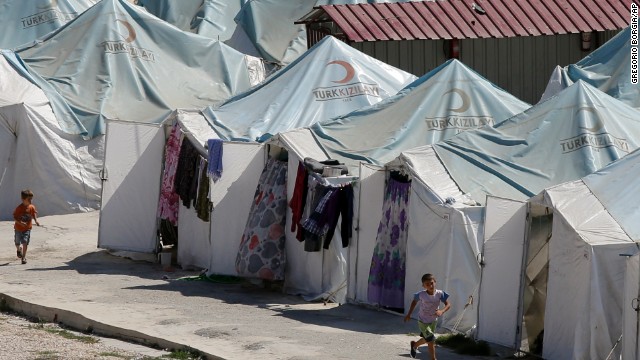 Children run past tents at a Syrian refugee camp in Yayladagi, Turkey, on September 3.
Children run past tents at a Syrian refugee camp in Yayladagi, Turkey, on September 3. 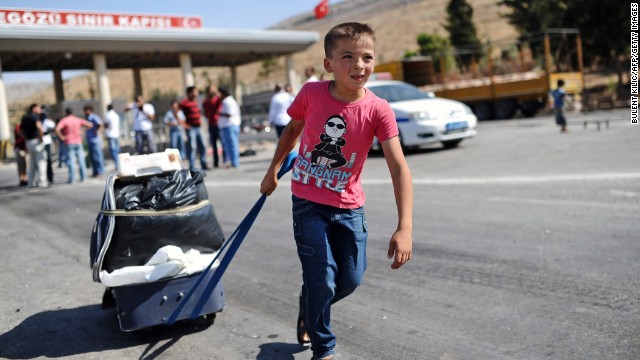 A child pulls a suitcase as Syrian refugees arrive at the Cilvegozu crossing gate of Reyhanli in Turkey's Hatay province on Saturday, August 31.
A child pulls a suitcase as Syrian refugees arrive at the Cilvegozu crossing gate of Reyhanli in Turkey's Hatay province on Saturday, August 31. 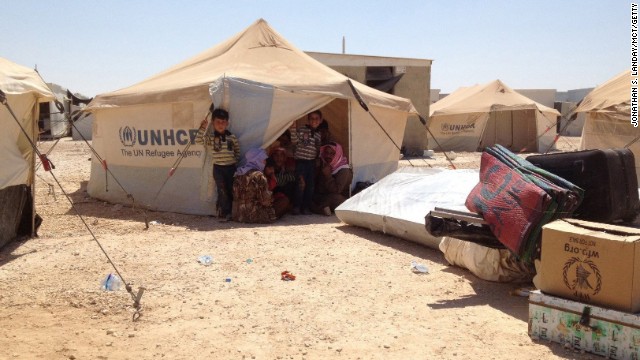 A family arrives from Syria at the Zaatari refugee camp in Jordan on Friday, August 30. Currently, Jordan has 515,000 registered Syrian refugees.
A family arrives from Syria at the Zaatari refugee camp in Jordan on Friday, August 30. Currently, Jordan has 515,000 registered Syrian refugees. 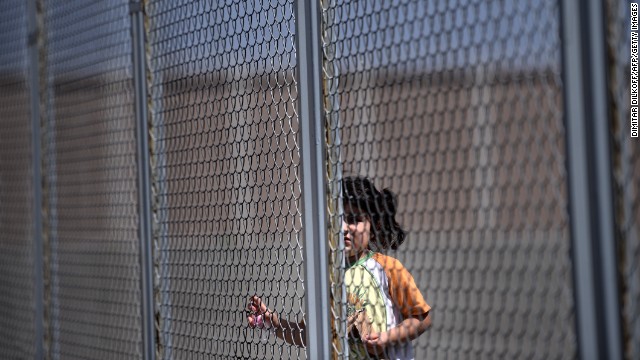 A Syrian girl stands behind a fence at Bulgaria's shelter near Lyubimets on August 28. More than 3,100 immigrants -- half of them Syrians -- have crossed into Bulgaria from neighboring Turkey this year, doubling their numbers compared with 2012 and and causing Bulgaria's few temporary accommodation facilities to overflow.
A Syrian girl stands behind a fence at Bulgaria's shelter near Lyubimets on August 28. More than 3,100 immigrants -- half of them Syrians -- have crossed into Bulgaria from neighboring Turkey this year, doubling their numbers compared with 2012 and and causing Bulgaria's few temporary accommodation facilities to overflow. 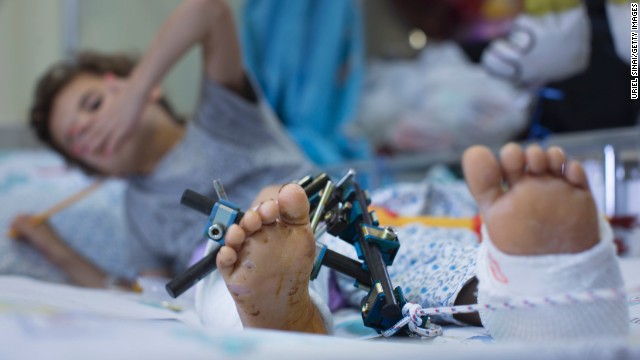 A wounded Syrian child is treated at the Israeli Ziv hospital on Wednesday, August 28, in the northern town of Safed, Israel. About 140 wounded Syrians, who have been fighting across the border from Israel, have been treated in Israeli hospitals since the beginning of the Syrian Civil war.
A wounded Syrian child is treated at the Israeli Ziv hospital on Wednesday, August 28, in the northern town of Safed, Israel. About 140 wounded Syrians, who have been fighting across the border from Israel, have been treated in Israeli hospitals since the beginning of the Syrian Civil war. 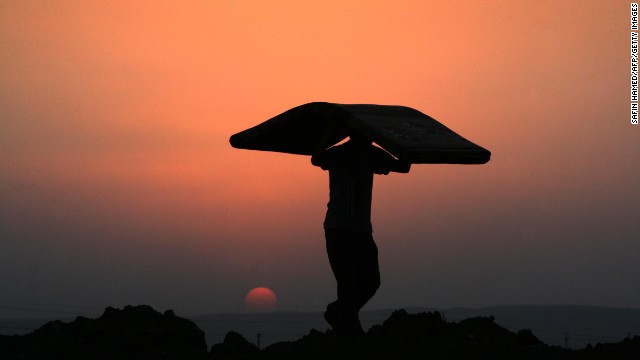 A Syrian-Kurdish man carries a mattress at sunset at the Quru Gusik refugee camp, east of Arbil, the capital of the autonomous Kurdish region of northern Iraq, on Tuesday, August 27. More than 50,000 Syrian refugees have crossed into Iraq's Kurdish region in less than two weeks as authorities rush to house them in more permanent camps.
A Syrian-Kurdish man carries a mattress at sunset at the Quru Gusik refugee camp, east of Arbil, the capital of the autonomous Kurdish region of northern Iraq, on Tuesday, August 27. More than 50,000 Syrian refugees have crossed into Iraq's Kurdish region in less than two weeks as authorities rush to house them in more permanent camps. 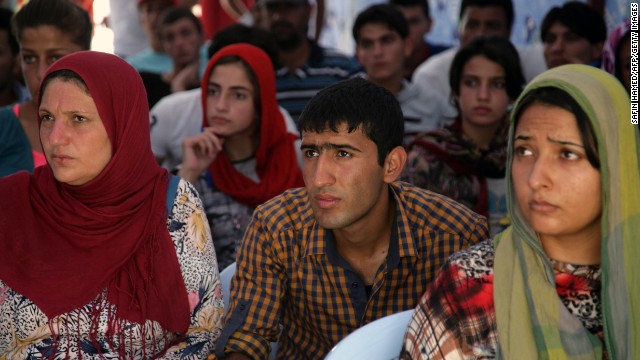 Syrian refugees listen to safety instructions at the Quru Gusik refugee camp on Saturday, August 24.
Syrian refugees listen to safety instructions at the Quru Gusik refugee camp on Saturday, August 24. 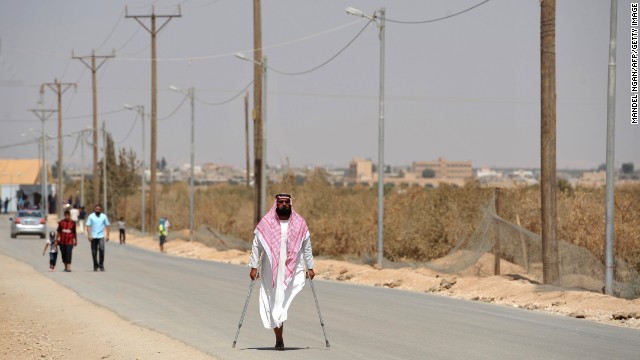 Syrian refugees at the Zaatari refugee camp on Thursday, July 18, near the Jordanian city of Mafraq, near the Jordanian-Syrian border.
Syrian refugees at the Zaatari refugee camp on Thursday, July 18, near the Jordanian city of Mafraq, near the Jordanian-Syrian border. 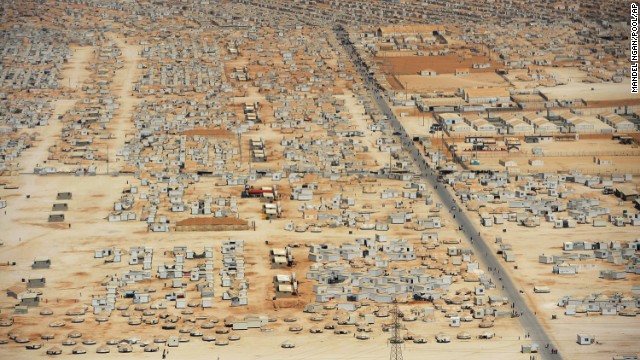 The expanse of the Zaatari refugee camp in Jordan as seen from an aerial view on July 18. The camp was opened on July 28, 2012, and is home to more than 130,000 refugees.
The expanse of the Zaatari refugee camp in Jordan as seen from an aerial view on July 18. The camp was opened on July 28, 2012, and is home to more than 130,000 refugees. 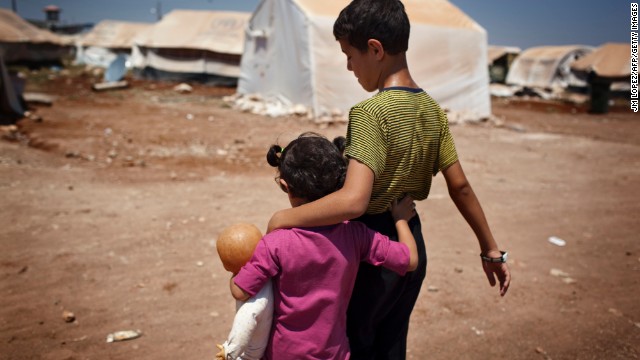 Syrian refugee children walk in the Bab al-Salam refugee camp in Syria's northern city of Azaz on Monday, July 15.
Syrian refugee children walk in the Bab al-Salam refugee camp in Syria's northern city of Azaz on Monday, July 15. 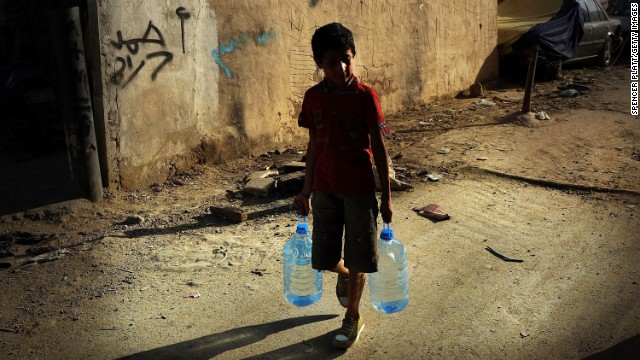 A boy walks with jugs of water on June 27 in a neighborhood in Beirut, Lebanon, with a high concentration of Syrian refugees. Since January, the number of Syrian refugees in Lebanon has more than tripled.
A boy walks with jugs of water on June 27 in a neighborhood in Beirut, Lebanon, with a high concentration of Syrian refugees. Since January, the number of Syrian refugees in Lebanon has more than tripled.  Syrian refugees stand with their belongings on June 20, World Refugee Day, at Zaatari refugee camp in Jordan.
Syrian refugees stand with their belongings on June 20, World Refugee Day, at Zaatari refugee camp in Jordan. 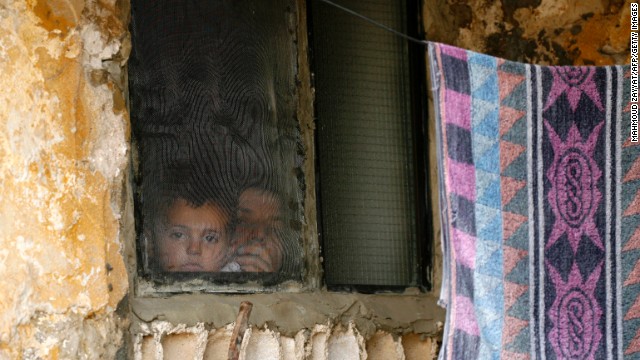 A Syrian woman and child look out of a refugee camp window on June 20 in Alman, Lebanon, after fleeing their hometown in Idlib province, Syria.
A Syrian woman and child look out of a refugee camp window on June 20 in Alman, Lebanon, after fleeing their hometown in Idlib province, Syria. 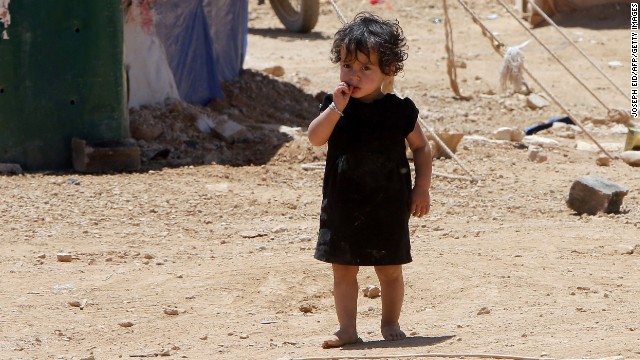 A child, whose family fled violence in Syria, stands at the Arsal refugee camp on June 14 in Lebanon's Bekaa Valley.
A child, whose family fled violence in Syria, stands at the Arsal refugee camp on June 14 in Lebanon's Bekaa Valley. 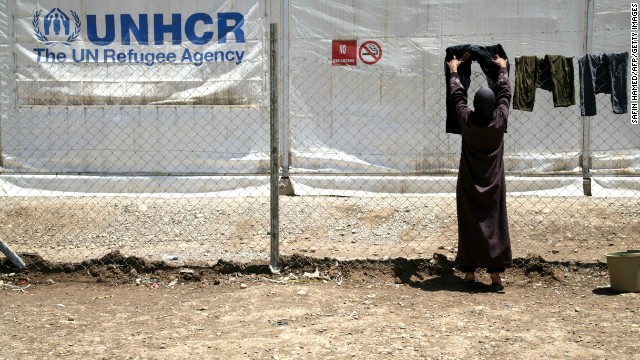 A woman uses a fence at the Domiz refugee camp near Kohuk, Iraq, to dry laundry on May 29.
A woman uses a fence at the Domiz refugee camp near Kohuk, Iraq, to dry laundry on May 29. 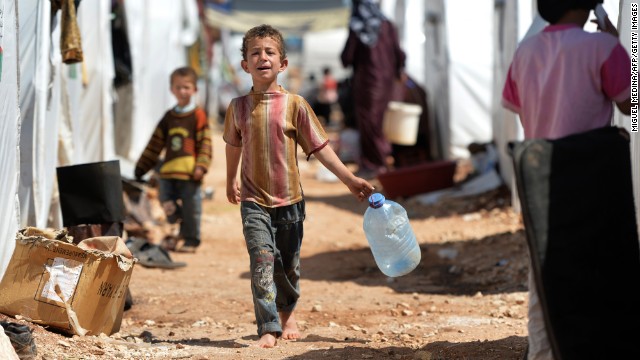 A boy carries a jug for water at the Maliber al-Salam refugee camp on April 28. The camp, located near the Turkish boarder, houses internally displaced Syrian families.
A boy carries a jug for water at the Maliber al-Salam refugee camp on April 28. The camp, located near the Turkish boarder, houses internally displaced Syrian families. 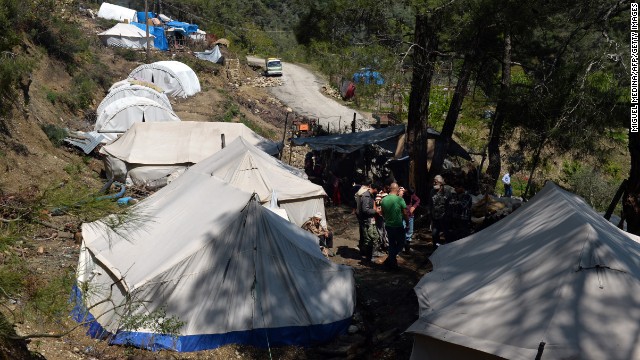 A makeshift refugee camp is seen near Syria's border with Turkey.
A makeshift refugee camp is seen near Syria's border with Turkey. 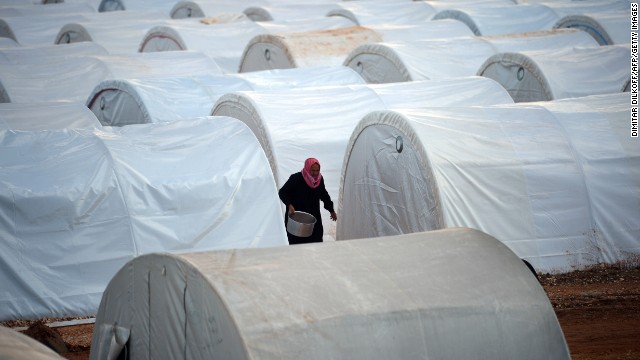 Row after row of temporary shelters fill the Maiber al-Salam refugee camp in Syria's Aleppo province, near the Turkish border on April 17.
Row after row of temporary shelters fill the Maiber al-Salam refugee camp in Syria's Aleppo province, near the Turkish border on April 17. 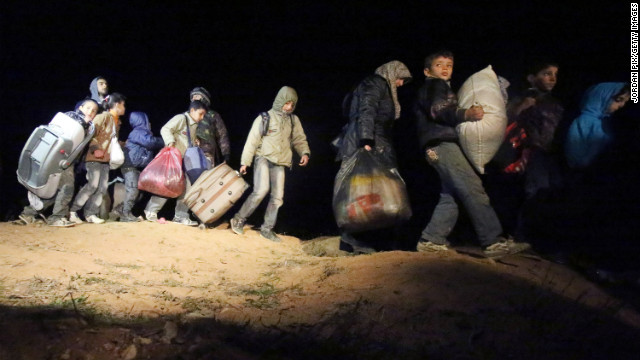 Refugees fleeing the conflict in Syria arrive February 18 at the Jordanian border.
Refugees fleeing the conflict in Syria arrive February 18 at the Jordanian border.  A Syrian girl stands at the entrance of a makeshift home near ruins in the ancient city of Serjilla in northwestern Syria on February 11. About half of Syria's refugees are children.
A Syrian girl stands at the entrance of a makeshift home near ruins in the ancient city of Serjilla in northwestern Syria on February 11. About half of Syria's refugees are children. 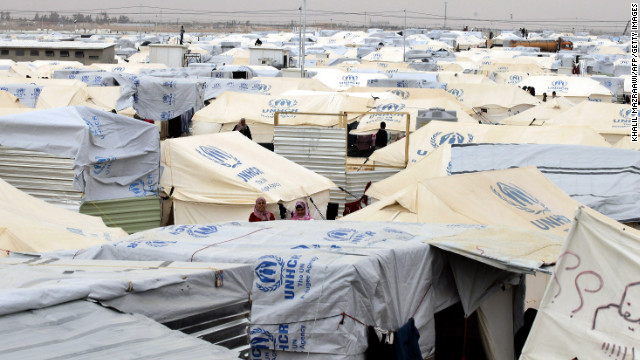 More than 400,000 people have fled Syria this year to countries including Lebanon, Jordan, Turkey, Iraq and Egypt. The Zaatari refugee camp is in Jordan, near the Syrian border.
More than 400,000 people have fled Syria this year to countries including Lebanon, Jordan, Turkey, Iraq and Egypt. The Zaatari refugee camp is in Jordan, near the Syrian border.  A refugee collects apples and some bread February 10 at the Azaz refugee camp along the Syrian-Turkish border. Turkey has spent more than $600 million setting up 17 refugee camps, with more under construction.
A refugee collects apples and some bread February 10 at the Azaz refugee camp along the Syrian-Turkish border. Turkey has spent more than $600 million setting up 17 refugee camps, with more under construction. 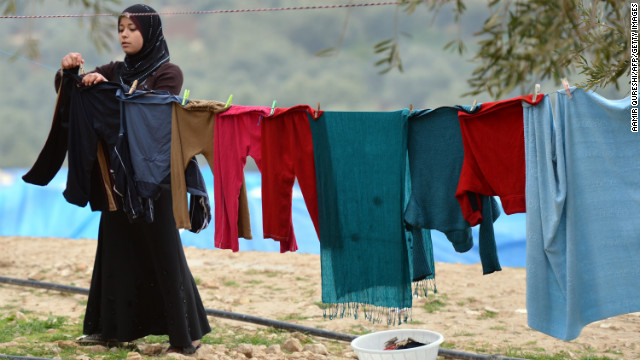 Clothes dry at the Qah refugee camp near the Turkish border on January 31. Many Syrians are forced to flee with few or no belongings.
Clothes dry at the Qah refugee camp near the Turkish border on January 31. Many Syrians are forced to flee with few or no belongings. 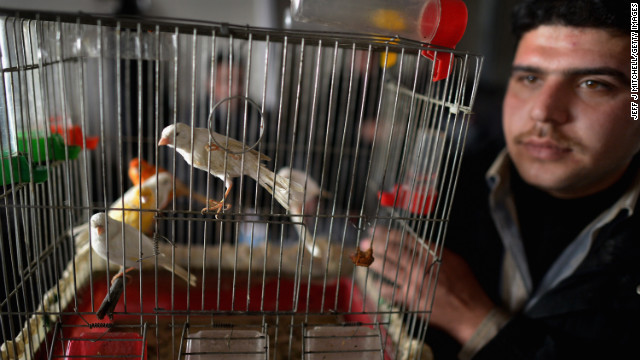 A man shows off his pet birds as new Syrian refugees arrive at the International Organization for Migration at the Zaatari refugee camp on January 30.
A man shows off his pet birds as new Syrian refugees arrive at the International Organization for Migration at the Zaatari refugee camp on January 30.  A refugee child gets a haircut at a makeshift barbershop at the Azaz refugee camp on February 19.
A refugee child gets a haircut at a makeshift barbershop at the Azaz refugee camp on February 19. 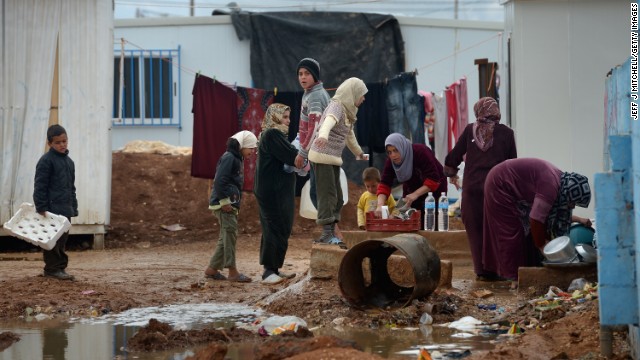 Syrian children gather around women washing in the Zaatari refugee camp on January 31.
Syrian children gather around women washing in the Zaatari refugee camp on January 31. 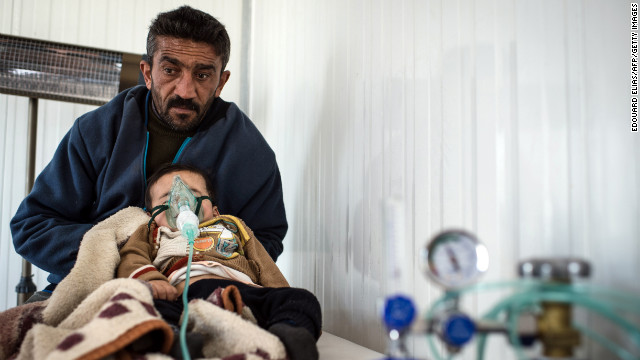 A refugee visits a clinic with his child at the Azaz refugee camp on February 10.
A refugee visits a clinic with his child at the Azaz refugee camp on February 10. 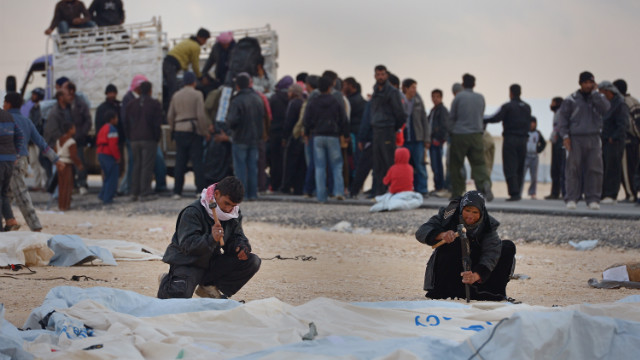 Syrians put up tents at the Zaatari refugee camp on January 30.
Syrians put up tents at the Zaatari refugee camp on January 30. 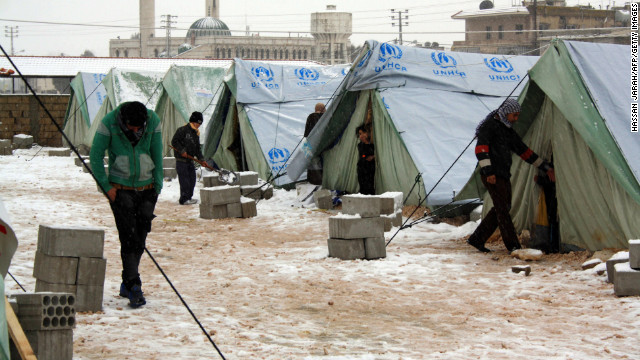 The U.N. High Commissioner for Refugees supplied tents in Al-Marj, in the eastern Lebanese Bekaa Valley. Some families have endured frigid weather in tent camps or struggle to pay for shelter.
The U.N. High Commissioner for Refugees supplied tents in Al-Marj, in the eastern Lebanese Bekaa Valley. Some families have endured frigid weather in tent camps or struggle to pay for shelter. 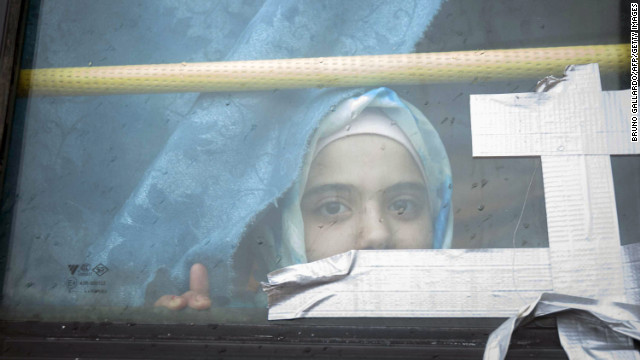 A Syrian girl looks through the window of a bus where she has lived with her family for the past eight months at a refugee camp in Bab al-Salam on the Syria-Turkey border on February 28.
A Syrian girl looks through the window of a bus where she has lived with her family for the past eight months at a refugee camp in Bab al-Salam on the Syria-Turkey border on February 28. 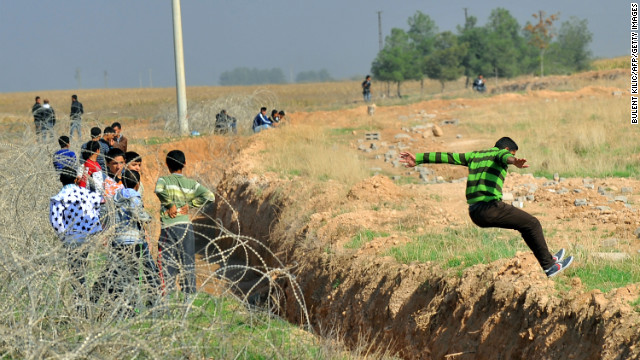 A Syrian jumps across the border between the Syrian town of Ras al-Ain and Ceylanpinar in Turkey's Sanliurfa province on November 10, 2012.
A Syrian jumps across the border between the Syrian town of Ras al-Ain and Ceylanpinar in Turkey's Sanliurfa province on November 10, 2012. 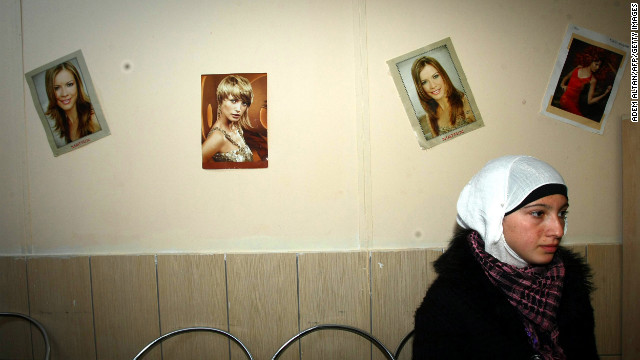 A Syrian refugee waits November 27, 2012, at a hairdresser's shop, where refugees can also receive training, inside the Oncupinar camp in Kilis, southern Turkey.
A Syrian refugee waits November 27, 2012, at a hairdresser's shop, where refugees can also receive training, inside the Oncupinar camp in Kilis, southern Turkey. 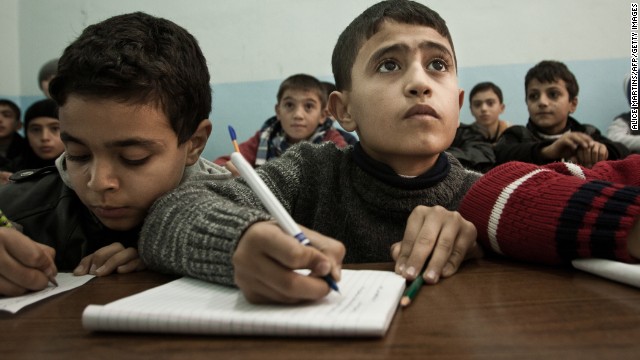 A Syrian boy attends school in the Turkish town of Kilis on December 17, 2012.
A Syrian boy attends school in the Turkish town of Kilis on December 17, 2012. 
1

2

3

4

5

6

7

8

9

10

11

12

13

14

15

16

17

18

19

20

21

22

23

24

25

26

27

28

29

30

31

32

33

34

35
- Peter Bergen: Complicating the Syria picture is regionwide sectarian strife
- He says the historic Sunni-Shia split is a key dynamic and U.S. strike could worsen conflict
- Iraq's death toll from sectarian struggles has been increasing
- Bergen: Al Qaeda-affiliated groups will seek to take advantage
Editor's note: Peter Bergen is CNN's national security analyst, a director at the New America Foundation and the author of "Manhunt: The Ten-Year Search for bin Laden -- From 9/11 to Abbottabad." Jennifer Rowland is a program associate at the New America Foundation.
(CNN) -- As they contemplate military action against Syria, one of many considerations members of Congress and Obama administration officials have to weigh is how a U.S. strike against the regime of Bashar al-Assad might effect the already complicated, even poisonous, state of Sunni-Shia relations in the region.
Three of the leading Sunni states, Saudi Arabia, Turkey and the UAE, have already offered their military assets if a US strike happens.
Last week, Iranian President Hassan Rouhani said that the Shia government of Iran and close Syrian ally Russia would work in "extensive cooperation" to protect Syria.

An American-led war in Syria with the military backing of some powerful Sunni states against a de facto Shia alliance of Iran, Syria, Iraq and Lebanese Hezbollah would likely greatly exacerbate the already tense relations between Sunni and Shia across the region.
In Syria, a popular uprising against a repressive ruler in 2011 has morphed into what is now a largely sectarian civil war pitting the country's Sunni Muslim majority against al-Assad's minority Alawite sect, which is associated with Shia Islam.
The Syrian regime is propped up with weapons and funds from Iran's Shia rulers and also benefits significantly from the support on the ground of battle-hardened fighters from Lebanese Hezbollah, an Iranian proxy.
As a possible U.S. strike looms in Syria, what had hitherto been a shadowy proxy war, with Sunni countries such as Saudi Arabia quietly supporting the Syrian rebels and Iran supporting al-Assad, could now devolve into a full-blown war that is openly supported by the most powerful Sunni and Shia states.
That is a real potential problem that needs to be weighed by Obama national security officials and representatives in Congress as they consider the options in Syria, because across the Muslim world from Lebanon to Pakistan, Sunnis and Shias are increasingly at each other's throats.
A further intensification of the already brutal Syrian civil war might further destabilize Syria's fragile neighbors; both Lebanon and Iraq could plunge back into civil wars.
 Should U.S. enter a sectarian war?
Should U.S. enter a sectarian war? 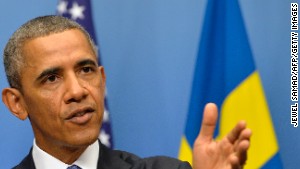 Obama: 'I didn't set a red line'
Obama: 'I didn't set a red line' 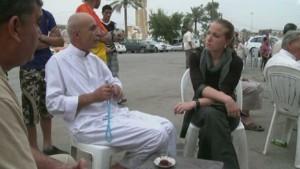 Why are Iraq's Sunnis so upset?
Why are Iraq's Sunnis so upset? Already in July, the United Nations recorded the highest death toll in Iraq since 2008, when the Iraq War was raging. In that month alone, more than 1,057 civilians and security personnel were killed. Many of those deaths were the result of bombings claimed by the Sunni terrorist group al-Qaeda in Iraq and were directed at Shia targets.
A splinter organization of al-Qaeda in Iraq is now fighting in Syria and is regarded as the most effective force fighting Assad, who it deems a heretic.
It's a very old story. The two dominant sects of Islam, Sunni and Shia, first split over the issue of who was the rightful successor of the Prophet Muhammad following his death in 632.
The conflict between the two sects has waxed and waned over the many centuries since, but right now the Syrian conflict could exacerbate the regional split along sectarian lines that we have seen over the past few years.
In 2011 the Sunni monarchy of the Gulf state of Bahrain backed by more than a thousand soldiers from Saudi Arabia put down with harsh tactics an uprising by its disadvantaged Shia majority population. The Bahrain government hinted that the uprising was an Iranian plot.
The sectarian conflicts in Syria, Iraq and Bahrain have also spilled over into Lebanon and Egypt. On June 23, in Lebanon's port city of Sidon, soldiers clashed with supporters of a hardline Sunni cleric, Sheikh Ahmed al-Assir, who had spoken out vehemently against the Syrian regime as well as the Shia Lebanese militant group, Hezbollah.
On the same day, four Egyptian Shia Muslims were stabbed, beaten, and dragged through the streets by members of a hardline Sunni group in the Giza neighborhood of Cairo.
The intensifying sectarian tensions in Egypt were partially the fault of the recently-ousted Muslim Brotherhood government. A week before the Giza attack, for example, President Mohamed Morsi had appeared on stage with hardline clerics who called Shias "filthy." And in May, Salafist members of Egypt's parliament denounced Shias as "a danger to Egypt's national security."
Beyond the Middle East, sectarian violence has also soared in South Asia over the past few years. More than 180 members of Pakistan's minority Shi'a Hazara community were killed in two massive bombings in the first two months of 2013 alone.
In neighboring Afghanistan, violent attacks on Shia Muslims are less frequent, but in December 2011, two nearly simultaneous suicide bombs in Kabul and Mazar-i-Sharif killed more than 60 Shia civilians as they celebrated the annual religious festival of Ashura.
We can expect sectarian tensions to continue boiling across the Muslim world, as the Syrian conflict grinds on and political and social unrest persist in many countries in the region.
Al-Qaeda-affiliated groups will seek to exploit these sectarian divisions to garner support for their own violent agenda, and may well find greater room to operate because of it.
Saudi Arabia and Qatar have mobilized their deep coffers to support extremist Sunni groups in the past, and will continue to do so as long as it means they are able to counterbalance Iran and its support for Shia regimes and militant groups.
All of these factors must be weighed as the United States weighs military action. They are not an argument for doing nothing in the face of al-Assad's large-scale use of chemical weapons but they are a reason to heed Machiavelli's warning "Wars begin when you will, but they do not end when you please."
Follow us on Twitter @CNNOpinion.
Join us on Facebook/CNNOpinion.







